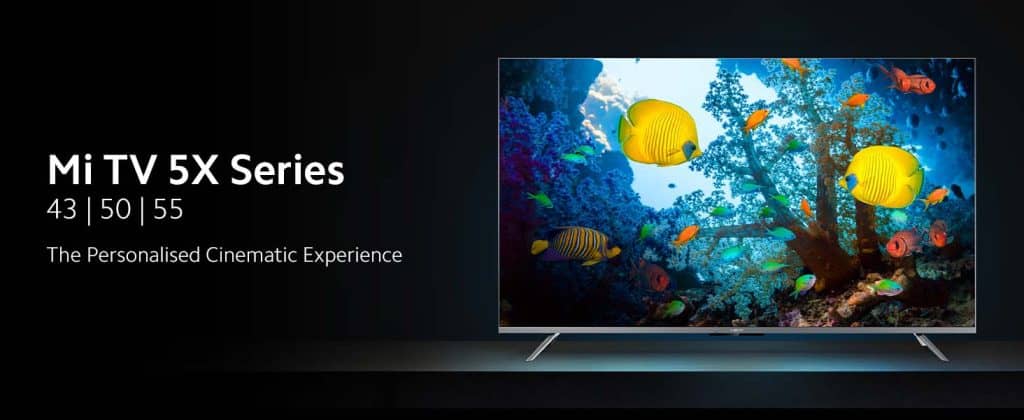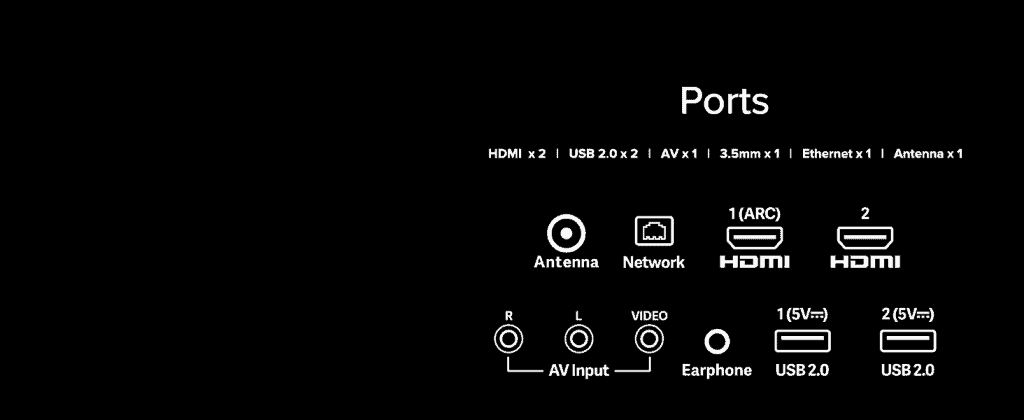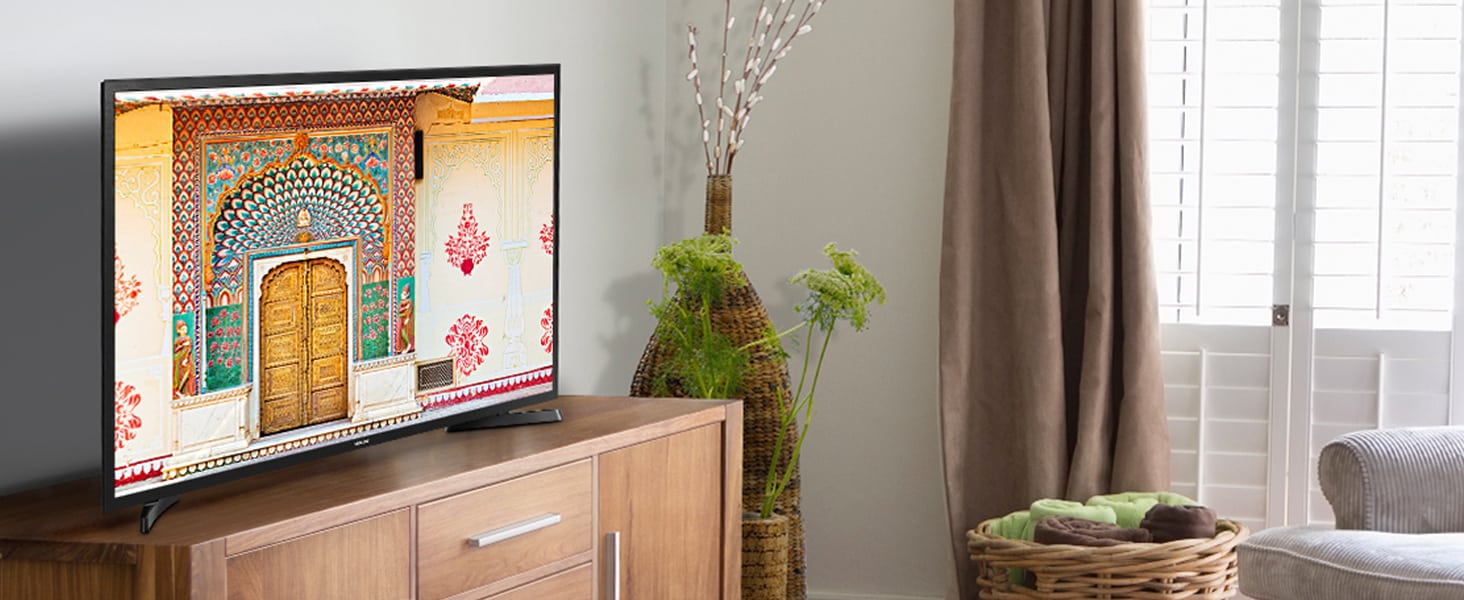If you’re on the hunt for a new television and are currently confused between MI vs Samsung TV in India. I can help.
As a subject matter expert in the realm of TVs, I’m here to guide you through the intriguing world of Samsung and MI TVs. These two brands have made their mark and gained immense popularity among Indian consumers, presenting us with an exciting comparison to explore.
In India, where entertainment is deeply ingrained in our culture, having a high-quality TV is more than just a luxury—it’s a necessity. Samsung and MI are known for their exceptional offerings, capturing the attention of discerning buyers seeking immersive viewing experiences. But how do they stack up against each other? That’s precisely what we’re here to find out.
Throughout this article, we’ll delve into every aspect that a TV buyer needs to know when considering a Samsung or MI TV in India.
We’ll journey through display quality, smart TV features, connectivity, audio systems, after-sales service, user reviews, pricing, and so much more. By the end, you’ll be equipped with the knowledge and insights necessary to make an informed decision that aligns with your specific needs and preferences.
MI vs Samsung TV in India – Which One to Buy?
This is not an easy question to answer. MI and Samsung each offer some great models and I generally compare them based on my needs. In this article, I would be recommending my preferred model for each of the television screen sizes. It will help you pick the right model based on your needs.
However, the main difference between the two brands is that MI’s televisions are powered mostly by Andriod OS and sometimes by Fire TV(Amazon). However, Samsung mostly uses Tizen (Its own proprietary OS).
So, if you are looking for an Android or a Fire TV, in most cases, you should opt for a MI Model.
MI vs Samsung TV – By Screen Sizes
32 Inch:
In this category, I will opt for this model by MI with my eyes closed. It is quite cheaper compared to the Samsung model in this category. The screen size being small, you cannot make out any difference between the screen quality. Plus this MI model has the added advantage of being on the Andriod-based OS.
43 Inch:
If you are looking to buy a 43 Inch model, I suggest opting for this TV by Samsung instead of going for MI. The overall build quality and display are much better compared to the MI model. Youtube, Netflix, Amazon Prime Video & Hotstar OTT apps are already integrated into it. However, if you need an android based operating system, then you can opt for this model by MI.
55 Inch:
With the same reasoning as with the 43 inch television above, my recommendation would be to opt for this model. However, if you need an android based television – go for this one.
Make sure you check out the reviews in the links I provided above.
This finishes my summary of the article. Now, if you wish to go into the technical details, continue reading further.
OLED TV:
If you are looking to buy an OLED TV, then I would recommend you to ditch both Samsung as well as Xiaomi and instead opt for this model by Sony. In my mind, the screen and sound quality offered by Sony Bravia in this segment cannot be matched by anyother brand in India.
Brand Overview: Samsung and MI TV in India
When it comes to TV brands in India, Samsung and MI have established themselves as prominent players, each with their own unique offerings and loyal fan bases. Let’s take a closer look at what sets them apart.
1. Samsung: Innovation and Reputation
When you think of Samsung, you think of innovation and cutting-edge technology. This South Korean giant has been a household name for decades, known for pushing the boundaries of what TVs can do. With a rich history and an impeccable reputation, Samsung has won the hearts of consumers worldwide.
a. Range of TV Models and Technologies Offered
Samsung boasts an extensive range of TV models to cater to diverse consumer needs. From sleek and affordable options to high-end flagship models, there’s something for everyone. But it’s not just about the variety—Samsung TVs are packed with state-of-the-art technologies. They have pioneered advancements such as QLED, Neo QLED, and even the revolutionary MicroLED technology, delivering stunning visuals and lifelike colors.
b. Key Features and Innovations
One of Samsung’s standout features is its commitment to picture quality. With vibrant colors, deep blacks, and impressive contrast ratios, Samsung TVs offer an immersive viewing experience. Their HDR (High Dynamic Range) support enhances details in both dark and bright scenes, making every moment on screen come to life.
c. Pricing and Affordability
Samsung understands that affordability is crucial, and they strive to offer a wide range of TVs across various price points. While their flagship models may carry a premium price tag, there are plenty of mid-range and budget-friendly options available, ensuring that quality and innovation are accessible to a broad audience.
2. MI TV: Disrupting the Market
Xiaomi’s MI TV brand burst onto the Indian scene and disrupted the market, capturing attention with its impressive offerings at competitive prices. With a focus on value for money, MI TVs have quickly gained popularity among price-conscious buyers.
a. TV Models and Product Lineup
MI TV has an enticing lineup of televisions that cater to different preferences and budgets. From entry-level models to feature-packed options, MI TVs offer an impressive range of choices. Xiaomi’s ability to strike a balance between affordability and quality has been a key factor in their success.
b. Noteworthy Features and Technology
MI TVs come packed with features that make them a compelling option. From vibrant displays to smart TV capabilities, MI TVs aim to provide an immersive entertainment experience without breaking the bank. Whether it’s the vivid visuals of their LED panels or the richness of their OLED displays, MI TVs have something to offer every viewer.
c. Competitive Pricing Strategy
One of the major factors that sets MI TV apart is its aggressive pricing strategy. Xiaomi believes in delivering exceptional value for money, offering feature-rich TVs at competitive prices. This approach has resonated with Indian consumers, making MI TVs a popular choice for those seeking quality at an affordable price.
In the next sections, we’ll explore in detail the display quality, smart TV features, connectivity options, audio systems, and much more, allowing you to make a well-informed decision when choosing between Samsung and MI TV in India. So, let’s dive in and uncover the secrets behind these captivating TV brands!
MI vs Samsung India – Display Quality and Technology
When it comes to TVs, the display quality is paramount. As an avid TV enthusiast, I understand the importance of a captivating visual experience. Let’s explore how Samsung and MI TV stack up in terms of display quality and the technologies they employ.
Samsung’s Display Technologies: A Feast for the Eyes
i. QLED, Neo QLED, and MicroLED: A Technological Marvel
Samsung has truly revolutionized the TV industry with its display technologies. QLED, short for Quantum Dot Light Emitting Diode, offers brilliant color reproduction and impressive brightness levels. The result is vibrant visuals with exceptional detail and accuracy. But Samsung didn’t stop there—they introduced Neo QLED, combining Quantum Mini LED backlighting with Quantum Matrix Technology.
This breakthrough innovation brings even greater precision, deeper blacks, and enhanced contrast to the table. And if you’re looking for the pinnacle of display technology, Samsung’s MicroLED TVs offer a mind-blowing experience. With tiny self-emissive LEDs, they deliver jaw-dropping brightness, infinite contrast, and unparalleled picture quality.

ii. Picture Quality and Color Accuracy
Having experienced Samsung TVs firsthand, I can attest to their exceptional picture quality. The colors are vivid, true-to-life, and remarkably accurate. The combination of advanced color technologies, such as Quantum Dot, HDR (High Dynamic Range) support, and precise backlight control, ensures that every scene pops with rich hues and nuanced details. Whether you’re watching movies, sports, or playing games, Samsung TVs excel in bringing visuals to life.
You May Like – MI vs VU – Better TV Brand in India?
iii. HDR Support and Performance
High Dynamic Range (HDR) takes the viewing experience to new heights by enhancing brightness, contrast, and color accuracy. Samsung’s HDR implementation is top-notch, supporting various HDR formats like HDR10+, HLG (Hybrid Log-Gamma), and even Dolby Vision in select models. This means you can enjoy a wider dynamic range, with bright highlights and deep shadows, for a more immersive and cinematic experience.
iv. Screen Sizes and Resolutions
From compact screens to massive displays that dominate your living room, Samsung offers a diverse range of screen sizes to suit every need. Whether you’re looking for a compact 32-inch TV or an expansive 75-inch masterpiece, Samsung has you covered. Additionally, they offer a range of resolutions, including Full HD, 4K UHD, and 8K, allowing you to choose the level of detail that suits your preferences and budget.
MI TV’s Display Technologies: Affordable Visual Brilliance
i. LED and OLED: Affordable Excellence
MI TVs may come at more affordable price points, but that doesn’t mean they compromise on visual quality. MI offers a range of LED and OLED TVs that deliver impressive visuals while keeping your wallet happy.
ii. Picture Quality and Color Reproduction
MI TVs, particularly their OLED offerings, provide commendable picture quality with vibrant colors and good contrast. While they may not match the absolute brilliance of Samsung’s QLED or MicroLED displays, MI TVs still deliver captivating visuals that can enhance your viewing experience. Colors are generally accurate, although they may not exhibit the same level of depth and nuance as their higher-end counterparts.

iii. HDR Capabilities and Performance
MI TVs also incorporate HDR technology to elevate your viewing experience. While the HDR performance may not reach the same heights as Samsung’s flagship models, MI TVs still offer respectable HDR support, allowing for improved brightness and contrast. You can expect to enjoy more detailed shadows and highlights, immersing yourself in a more visually engaging content.
iv. Range of Screen Sizes and Resolutions
MI TVs come in various screen sizes and resolutions, catering to a wide range of needs and preferences. Whether you’re looking for a compact TV for a bedroom or a large screen for your living room, MI has options for you. From Full HD to 4K UHD, their TVs offer a good balance between affordability and visual quality.
Samsung vs MI – Smart TV Features and Operating System
As an enthusiast who enjoys the convenience of a smart TV, I know that seamless connectivity and intuitive interfaces are essential. Let’s explore the smart TV features and operating systems of Samsung and MI TVs, unlocking a world of limitless possibilities.
Samsung’s Tizen OS: A User-Friendly Journey
i. Tizen OS Overview
Samsung’s Tizen operating system is a delight to navigate. Its intuitive interface and user-friendly design make it a breeze to explore a vast array of features and apps. The home screen provides easy access to your favorite content, apps, and settings, ensuring a smooth and personalized experience. The Tizen OS is renowned for its stability and smooth performance, allowing you to effortlessly switch between apps and enjoy lag-free multitasking.
Suggested Read – Best 43-Inch Televisions in India
ii. User Interface and Navigation
Navigating Samsung’s Tizen OS is a joyous experience. The interface is clean, organized, and visually appealing, making it easy to find what you’re looking for. Whether you prefer browsing through menus or using voice commands, Samsung offers multiple options for effortless navigation. The inclusion of features like Universal Guide, which recommends content based on your viewing habits, further enhances the user experience.

iii. App Store and Available Applications
Samsung’s app store provides a vast selection of applications to cater to all your entertainment needs. From popular streaming services like Netflix and Amazon Prime Video to gaming apps and lifestyle apps, the Tizen OS app store offers a wide range of choices. The store is regularly updated, ensuring you have access to the latest and greatest apps in the market.
iv. Voice Control and AI Integration
Samsung TVs come equipped with voice control capabilities, allowing you to interact with your TV using simple voice commands. Whether it’s changing channels, adjusting volume, or searching for content, you can do it all with just your voice. With the integration of AI assistants like Samsung’s Bixby or even compatibility with popular voice assistants like Alexa and Google Assistant, you can control your smart home devices and access a wealth of information without lifting a finger.
MI TV’s PatchWall and Android TV: A Universe of Entertainment
i. PatchWall and Android TV Platform
MI TVs operate on PatchWall, MI’s custom user interface built on top of the Android TV platform. PatchWall aims to curate content from various sources, including streaming apps, live TV, and more, providing a unified and seamless entertainment experience. It intelligently organizes content based on your preferences and viewing history, ensuring you discover new and exciting shows effortlessly.
ii. User Experience and Interface
PatchWall offers a visually appealing and user-friendly interface. Its minimalist design and intuitive layout make it easy to navigate through a vast library of content. With its content recommendations and personalized recommendations, PatchWall makes it easy to find something that matches your interests, whether it’s the latest trending series or niche documentaries.

iii. App Store and App Compatibility
With Android TV at its core, MI TVs offer access to the Google Play Store, giving you a vast selection of apps and games at your fingertips. From streaming services to productivity apps and games, you can explore a wide range of applications to cater to your specific needs. The compatibility with the Android ecosystem ensures you have access to a wealth of content and services.
iv. Voice Assistant and Smart Home Integration
MI TVs support Google Assistant, enabling seamless voice control and smart home integration. By simply using your voice, you can control your TV, manage connected devices, and access information or services using the power of Google Assistant. This integration adds convenience and expands the capabilities of your MI TV beyond just entertainment.
In the next section, we’ll dive into the world of connectivity and ports, exploring the ways in which Samsung and MI TVs enhance your multimedia experiences.
Samsung vs Xiaomi – Connectivity and Ports
When it comes to connecting external devices and expanding your multimedia experiences, having the right connectivity options is crucial. As an avid user who enjoys seamless connectivity, let me walk you through the connectivity and ports available on Samsung and MI TVs.
Samsung’s Connectivity Options: Versatility at Your Fingertips
i. HDMI and USB Ports
Samsung TVs offer a range of HDMI and USB ports, allowing you to connect various devices such as gaming consoles, Blu-ray players, soundbars, and USB storage devices. HDMI ports enable high-definition audio and video transmission, ensuring you can enjoy your favorite content with the best possible quality. USB ports provide convenient access to multimedia files, allowing you to play photos, videos, and music directly from your USB drives.
ii. Wireless Connectivity
Samsung TVs are equipped with built-in Wi-Fi, enabling seamless wireless connectivity to your home network. This allows you to stream content from popular platforms, browse the web, and access a wide range of online services without the hassle of cables. Additionally, Samsung TVs often support Bluetooth connectivity, allowing you to connect wireless headphones, speakers, or other compatible devices for a personalized audio experience.
iii. Screen Mirroring and Casting
Samsung’s screen mirroring feature, often referred to as “Smart View” or “Screen Share,” allows you to mirror the content from your compatible mobile devices onto your TV screen wirelessly. Whether it’s photos, videos, or presentations, you can effortlessly display them on the big screen with just a few taps. Some Samsung TVs also support casting, enabling you to cast content from compatible apps on your mobile device directly to the TV.

MI TV’s Connectivity Options: Seamlessly Connect and Expand
i. HDMI and USB Ports
MI TVs offer multiple HDMI and USB ports, providing flexibility for connecting external devices. HDMI ports allow you to connect gaming consoles, set-top boxes, soundbars, and other devices, ensuring a rich multimedia experience. USB ports offer convenient access to multimedia files, allowing you to enjoy your favorite movies, photos, and music directly from USB storage devices.
ii. Wireless Connectivity
MI TVs are equipped with Wi-Fi capabilities, allowing you to connect to your home network effortlessly. This opens up a world of online content, streaming services, and smart features. You can easily access apps, browse the internet, and enjoy a wide range of entertainment options without the need for physical connections. Some MI TVs also support Bluetooth, enabling wireless connections to headphones, speakers, and other compatible devices.
iii. Screen Casting and Mirroring
With MI TVs, you can effortlessly cast or mirror content from your compatible mobile devices onto the TV screen. Whether it’s streaming videos, sharing photos, or playing games, you can enjoy them on the larger display with ease. MI TVs support popular casting protocols, making it convenient to share content from your smartphones or tablets to the TV screen.
Read this post for details on how to mirror mobile screens on MI TV.
In the next section, we’ll explore the audio systems of Samsung and MI TVs, unraveling the immersive sound experiences that enhance your viewing pleasure. Get ready to immerse yourself in captivating audio!
Samsung & MI – Audio System Comparison
As a true audio aficionado, I understand the importance of immersive sound when it comes to enhancing overall viewing pleasure. Let’s dive into the audio systems of Samsung and MI TVs and discover how they deliver captivating audio experiences.
Samsung’s Audio Technologies: Crisp and Immersive Soundscapes
i. Built-in Speakers and Audio Quality
Samsung TVs are known for their commitment to audio excellence. Equipped with high-quality built-in speakers, they deliver crisp and immersive soundscapes that complement the stunning visuals. Whether you’re watching movies, playing games, or enjoying your favorite music, Samsung TVs ensure that every sound is reproduced with clarity and precision. Their audio systems are designed to provide a balanced audio experience, with clear dialogues, rich bass, and well-defined soundstage.
ii. Sound Enhancement Technologies
Samsung integrates various sound enhancement technologies to elevate your audio experience. Features like Dolby Digital Plus, DTS (Digital Theater Systems), and multi-channel audio decoding ensure that you can enjoy surround sound-like experiences from the comfort of your living room. Additionally, some higher-end Samsung models come with advanced audio technologies like Object Tracking Sound (OTS) or Object Tracking Sound Pro (OTS Pro), which use strategically placed speakers to create a three-dimensional soundstage.
iii. External Audio Connectivity
For those seeking a more immersive audio experience, Samsung TVs offer various options for external audio connectivity. Optical audio output, HDMI ARC (Audio Return Channel), or HDMI eARC (Enhanced Audio Return Channel) allow you to connect soundbars, home theater systems, or other external speakers to enhance the audio output. This flexibility ensures that you can customize your audio setup to suit your preferences and create a truly cinematic experience at home.
MI TV’s Audio Technologies: Clear and Dynamic Sound
i. Inbuilt Speakers and Sound Quality
MI TVs may come at more affordable price points, but they don’t compromise on audio quality. Equipped with inbuilt speakers, MI TVs deliver clear and dynamic sound that enhances your viewing experience. While they may not offer the same level of audio immersion as higher-end models, they provide satisfactory audio output for everyday entertainment.
ii. Sound Enhancement Features
MI TVs incorporate sound enhancement features to optimize the audio experience. Whether it’s virtual surround sound technology or equalizer settings, these features aim to enhance the audio output and create a more immersive soundstage. While they may not offer the same breadth of advanced audio technologies as Samsung, MI TVs strive to deliver an enjoyable audio experience within their price range.
iii. External Audio Connectivity
If you desire a more robust audio setup, MI TVs provide options for external audio connectivity. Optical audio output and HDMI ARC allow you to connect soundbars, speakers, or home theater systems, enabling you to enhance the audio output and create a more immersive audio experience. This flexibility allows you to customize your audio setup based on your preferences and elevate your overall viewing pleasure.
Making an Informed Decision
After diving into the world of Samsung and MI TVs, we have explored their key features, compared their performance, and delved into the realm of after-sales service and customer support. Now, armed with all the information, it’s time to summarize our findings and help you make an informed decision.
Visual Performance: A Feast for the Eyes
Both Samsung and MI TVs offer stunning visuals that bring your favorite content to life. Samsung’s QLED and OLED technologies deliver exceptional picture quality with vibrant colors, deep blacks, and impressive contrast ratios. On the other hand, MI TVs provide great value for money, offering Full HD and 4K UHD displays that deliver sharp images and satisfying visual experiences.
Winner: Samsung for premium picture quality, MI for affordable yet impressive visuals.
Smart TV Features and Operating Systems: Navigating the Smart Entertainment Landscape
Samsung’s Tizen OS offers a user-friendly interface, seamless navigation, and a wide range of apps for your entertainment needs. MI TVs, with their PatchWall interface built on Android TV, provide a curated content experience and access to the vast Google Play Store. Both operating systems have their strengths, offering a plethora of features and customization options.
Winner: Tie, as it depends on personal preference and specific app requirements.
Connectivity and Ports: Expand Your Multimedia Horizons
Samsung and MI TVs provide a variety of connectivity options, including HDMI and USB ports, wireless connectivity, and screen mirroring capabilities. Samsung offers a versatile range of ports and features like HDMI ARC or eARC for enhanced audio connectivity. MI TVs offer satisfactory connectivity options, allowing you to connect external devices and enjoy seamless multimedia experiences.
Winner: Samsung for a wider range of connectivity options and advanced audio connectivity.
Audio Systems: Immersive Soundscapes
Samsung TVs excel in delivering immersive audio experiences with their built-in speakers and advanced sound enhancement technologies. MI TVs, while offering satisfactory audio quality, may not provide the same level of audio immersion as higher-end models. However, both brands allow for external audio connectivity, allowing you to enhance the audio output with soundbars or home theater systems.
Winner: Samsung for immersive audio quality.
After-Sales Service and Customer Support: Peace of Mind Matters
Samsung and MI prioritize customer satisfaction, offering warranty coverage and responsive customer support channels. Samsung has a vast network of service centers and authorized technicians, ensuring timely assistance when needed. MI also provides localized support, with service centers and trained technicians available in various locations.
Winner: Tie, as both brands offer reliable after-sales service and customer support.
In the end, the choice between Samsung and MI TVs boils down to your specific needs, preferences, and budget. Samsung excels in premium picture quality, advanced audio features, and a robust after-sales service network. MI offers great value for money, impressive visuals, and a user-friendly interface. Consider your priorities, desired features, and budget to determine which brand aligns best with your requirements.
Remember, whether you choose Samsung or MI, both brands offer a range of TVs that cater to different budgets and requirements. So, embark on your TV-buying journey, armed with the knowledge you’ve gained, and immerse yourself in a world of captivating entertainment!
